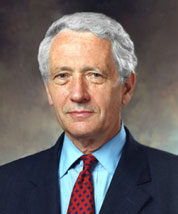Real estate is a major source of value in both developed and developing countries. In the United States households have $9.6 trillion or 16 percent of their wealth in real estate. Farmers have another $1.3 trillion of equity in their farms, bringing total household wealth in real estate to nearly 20 percent of household assets. Hernando De Soto, writing in 1993, said that some 70 percent of Peruvian wealth was in real estate. One study found that in Uganda “between 50 and 60 percent of the asset endowment of the poorest households” was land. The World Bank confirms that the proportion of real property is between one-half and three-quarters of wealth in most economies.
In some countries, of course, agricultural production may be less important because mining or fishing or village enterprise take precedence over agriculture, but urban living is still the exception in most of the developing world. In the United States, in contrast, despite its vast expanse, 79.0 percent of residents live in urban areas. But in highly populated India, only 27.8 percent of people lived in urban areas in 2000. And in some African countries the urban population is an even smaller proportion; for Ethiopia the proportion of urban dwellers was only 15.9 percent.
Legal Uncertainty
To simplify, it is useful to think of agricultural land as the most important development topic so far as real estate is concerned. Yet, in the developing world, agricultural land ownership is often shrouded in legal uncertainty: “In many countries, especially in Africa, … often more than 90 percent of land remains outside the existing legal system.” Moreover, in cities the legal situation is often even more uncertain and problematic because social norms and bonds of tradition are much looser than in the less rapidly changing countryside. De Soto’s study of Peru led him to the conclusion that “more than 90 percent of rural and half of urban property rights in Peru are not protected by formalized titles—that is, they are ‘informal.’” African and Asian developing countries present a similar problem: “More than 50 percent of the peri-urban population in Africa and more than 40 percent in Asia live under informal tenure and therefore have highly insecure land rights.”


